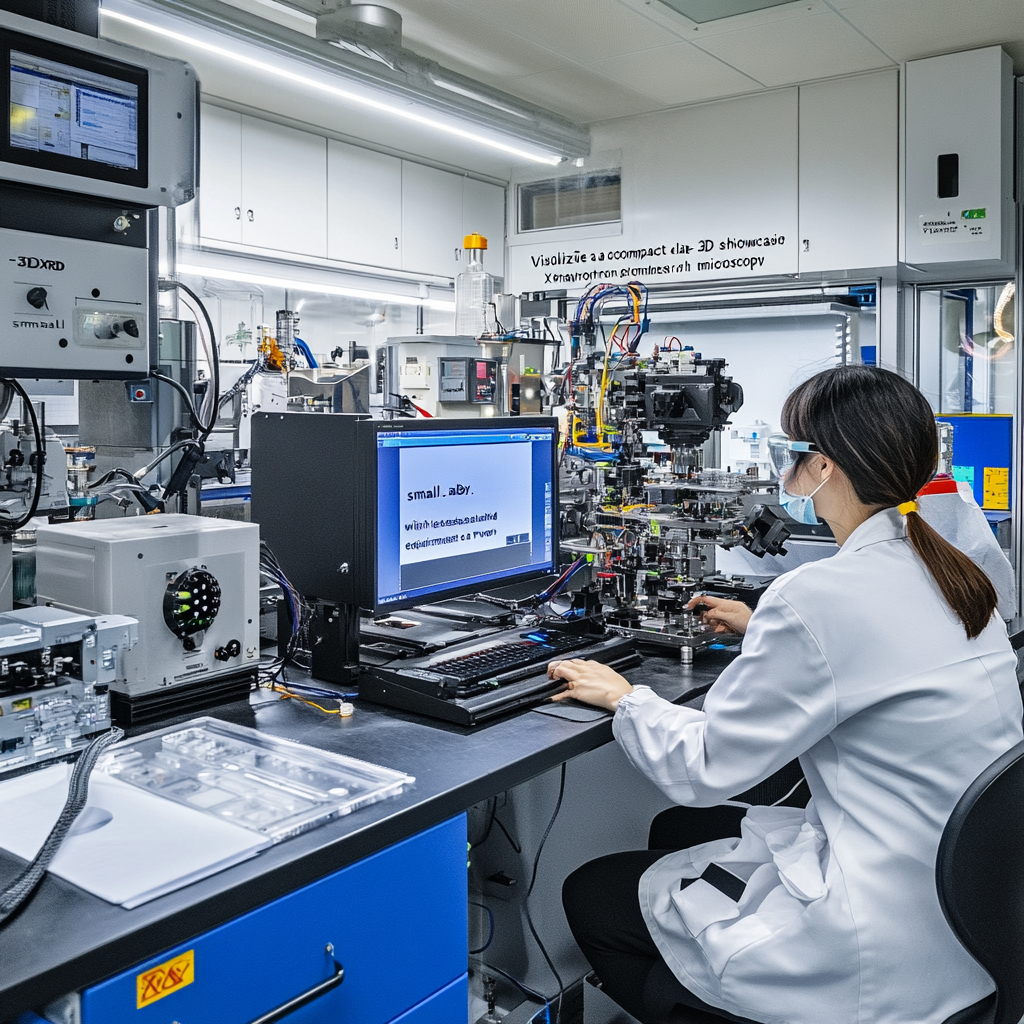
Synchrotron in a closet: Bringing powerful 3D X-ray microscopy to smaller labs
The "Synchrotron in a Closet" Revolution: How Big Science Got a Mini-Me
Picture this: a powerful machine that can decode the atomic ballet of titanium alloys utilized in jet engines, yet it tucks away snugly in a janitor's broom closet. No, this isn’t a plot twist from a sci-fi blockbuster; this is the story of the lab-3DXRD, a revolutionary tool that’s making synchrotron-quality microscopy accessible to the masses. Researchers have cracked the enigma of refining the gargantuan synchrotrons—those hulking, room-sized monsters of science—into sleek, innovative lab gear. Say hello to the future generation, powered by a liquid-metal-jet anode that even Tony Stark would be envious of in his high-tech lair.
Why Size Matters (and Why It Doesn’t)
Traditional synchrotrons are the majestic cathedrals of modern science, colossal arrangements like the staggering 792-meter NSLS-II, tipping the scales heavier than three Eiffel Towers combined. They’re wonderfully complex but about as reachable as a private lunar outpost. Now, the new "closet synchrotron" flips this narrative, revolutionizing accessibility by employing a continuously flowing liquid metal target—usually gallium alloys—that chuckles at traditional thermal limits. While solid targets would be putty in the hands of high-energy beams, the liquid stream coolly dissipates heat like a high-performance Formula 1 radiator, cranking up its X-ray output to astonishing levels—up to one million times stronger than your dentist’s rattling X-ray machine. Talk about a leap from oral care to astronaut-level tech!
Here’s the kicker—this innovation is more than just power; it’s results. When tested on aerospace-grade titanium, the lab-3DXRD successfully identified 96% of the crystalline structures that its larger counterparts could recognize. It stumbled only with grains smaller than 60 micrometers, a minor hiccup likely to vanish soon with the integration of photon-counting detectors.
- Titanium’s Secrets Laid Bare: It's like having an all-access backstage pass to the atomic structure of materials!
- Phase-Contrast Imaging for the Masses: The Munich Compact Light Source already demonstrated how tabletop synchrotrons could track live lung motion in lab mice—now imagine that capability in every materials science lab!
- From Kidneys to Jet Engines: Compact X-ray microscopes are on the verge of transforming renal biopsies, having recently mapped a mouse nephron without putting a scalpel to it—so soon, your local college might diagnose turbine blade cracks as effortlessly as it serves coffee!
The Liquid Metal Savior
Now, hold on to your science hats because the liquid-metal-jet anode is where things really get spicy. This genius innovation doesn’t just cool down the system; it rewrites the entire script. By swapping static targets for a self-replenishing liquid metal stream, researchers take a giant leap over the never-ending tug-of-war between power and meltdowns. It’s like replacing a flickering candle with a blazing plasma torch while keeping those fire hazards at bay. As a result, the diffraction patterns produced are so sharp, they could easily outshine traditional synchrotrons.
What Lies Ahead? Your Fluorescent Socks
While sweeping national synchrotrons won’t gather dust anytime soon (they still reign supreme for nanoscale applications), this groundbreaking advancement unlocks doors that lead to exhilarating possibilities. Envision a world where:
- Materials engineers fine-tune alloy recipes in real-time, akin to chefs perfecting a delectable béarnaise sauce.
- Pharmaceutical researchers meticulously observe drug crystals crystallizing atom-by-atom during R&D, a live version of baking bread with a sprinkle of suspense.
- Art conservationists use the power of this technology to expose fraudulent brush strokes while luxuriating over their cappuccinos.
And here’s the cherry on top: these innovative systems don’t simply provide 3D imaging; they map internal strains with sub-micron precision. Imagine catching a glimpse of stress patterns in a ballet dancer’s bones as they pirouette—now that’s the kind of insight science fiction writers only dream about!
The Dark Horse: Inverse Compton Scattering
Let’s not overlook the Munich team’s crafty alternative using inverse Compton scattering. By colliding laser pulses with electron beams, they generate synchrotron-like X-rays without needing to create a cyclotron-sized apparatus. Think of it as whipping up champagne in a soda stream—delightfully compact and sweet, with potential disruptiveness on the horizon.
So, the next time someone utters the phrase “big science,” I want you to conjure an image of a grad student in Crocs racing between pizza breaks as they run 3D metal scans. The closet synchrotron isn’t merely grounding itself in labs; it’s rewriting the playbook on who gets to participate in the big leagues of scientific exploration.
Want to stay up to date with the latest news on neural networks and automation? Subscribe to our Telegram channel: @channel_neirotoken
(Editors’ note: No actual closets were harmed in the testing of these devices. Titanium alloys, however, were thoroughly interrogated.)
For those keen on diving deeper into this innovative leap of science, check out the full story on the closet synchrotron breakthrough here.

